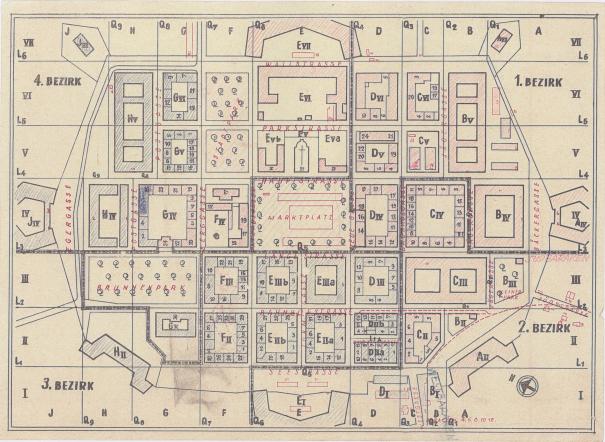Terezín (Theresienstadt) was built in 1780 - 1790 as a fortress to guard the northern approaches to the Bohemian heartlands. In 1782 it was given the status of a town, the life of which was closely connected to the military garrison. The small fortress, which forms part of the Terezín fortification system, became famous under the Habsburg monarchy as a prison and place of punishment for both military and political prisoners.
The most tragic period in the town's history came during the Second World War. First, in June 1940, the German occupants set up a police prison for the Prague Gestapo in the Small Fortress. Then, on the 24th of November 1941, a ghetto was established in the actual town. As a concentration and transit camp, it was used for Jews from the Protectorate of Bohemia and Moravia, and later also from Germany, Austria, the Netherlands, Denmark and Slovakia.

A map of Terezín from the ghetto period. The labelling of the streets using a combination of letters and numbers can be seen, as well as the names of the streets from the period of the beautification of Terezín preceding the visit by a delegation from the International Committee of the Red Cross.
-
The history of the Terezín ghetto
-
The creation of the ghetto. (In Czech).
-
Terezín's decimation and transit function. (In Czech).
-
Terezín's propaganda function. (In Czech).
-
The last transports and the end of the war in Terezín. (In Czech).
-
Conclusion. (In Czech).
-
The everyday face of the ghetto
-
Transports. (In Czech).
-
Overcrowding. (In Czech).
-
Hunger. (In Czech).
-
Old people. (In Czech).
-
The youngest prisoners. (In Czech).
-
Culture. (In Czech).
-
Sickness and death. (In Czech).
-
Death and burial. (In Czech).